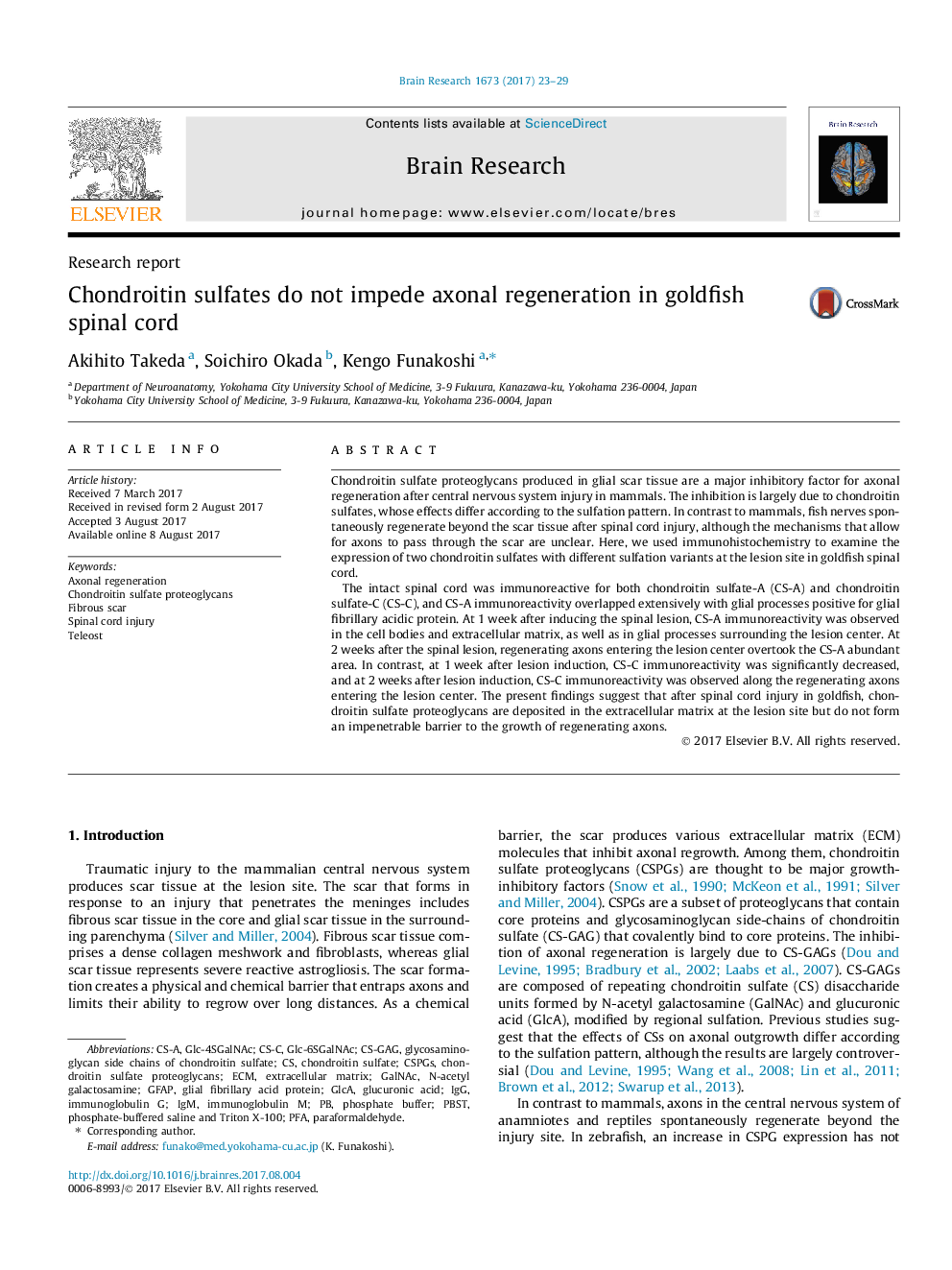| Article ID | Journal | Published Year | Pages | File Type |
|---|---|---|---|---|
| 5736516 | Brain Research | 2017 | 7 Pages |
Abstract
The intact spinal cord was immunoreactive for both chondroitin sulfate-A (CS-A) and chondroitin sulfate-C (CS-C), and CS-A immunoreactivity overlapped extensively with glial processes positive for glial fibrillary acidic protein. At 1Â week after inducing the spinal lesion, CS-A immunoreactivity was observed in the cell bodies and extracellular matrix, as well as in glial processes surrounding the lesion center. At 2Â weeks after the spinal lesion, regenerating axons entering the lesion center overtook the CS-A abundant area. In contrast, at 1Â week after lesion induction, CS-C immunoreactivity was significantly decreased, and at 2Â weeks after lesion induction, CS-C immunoreactivity was observed along the regenerating axons entering the lesion center. The present findings suggest that after spinal cord injury in goldfish, chondroitin sulfate proteoglycans are deposited in the extracellular matrix at the lesion site but do not form an impenetrable barrier to the growth of regenerating axons.
Keywords
Related Topics
Life Sciences
Neuroscience
Neuroscience (General)
Authors
Akihito Takeda, Soichiro Okada, Kengo Funakoshi,
